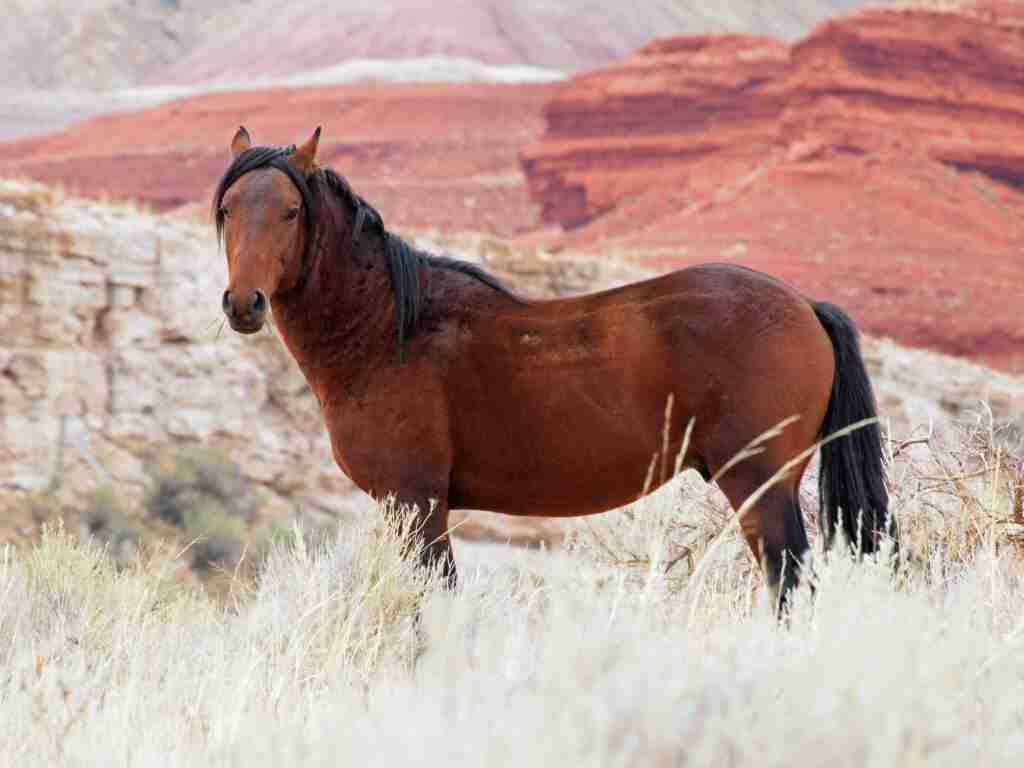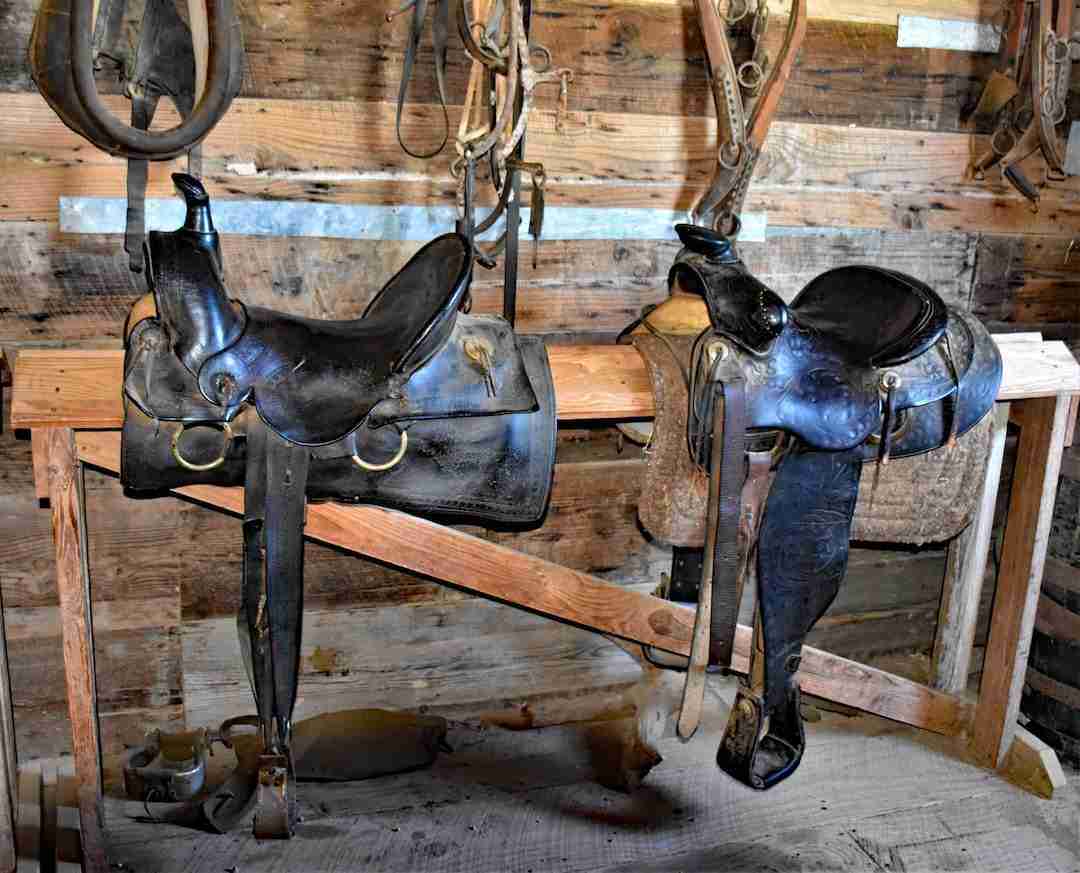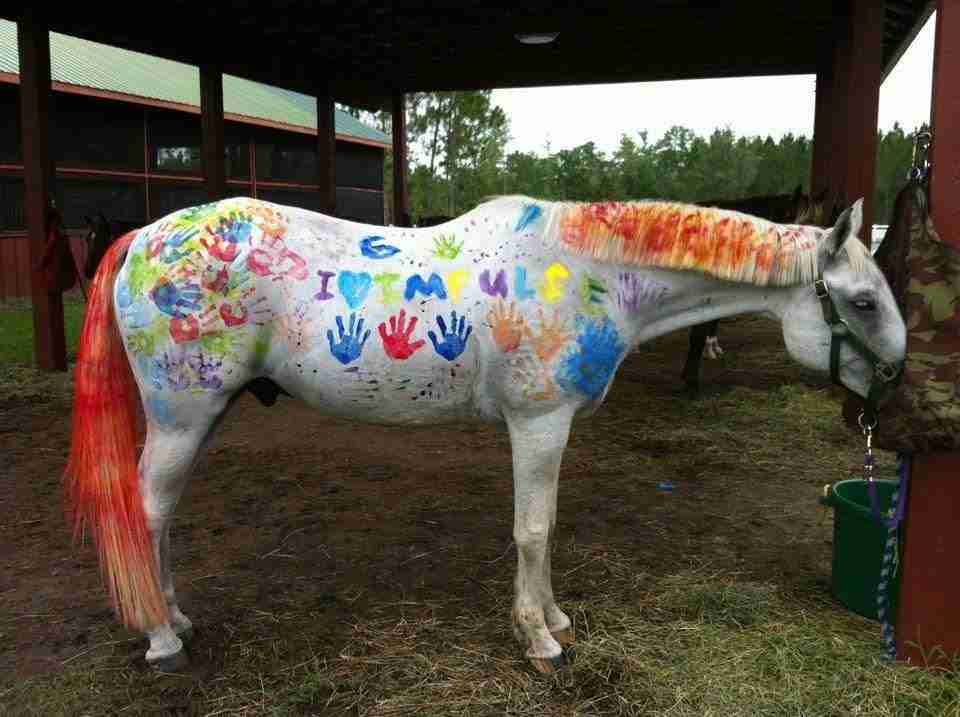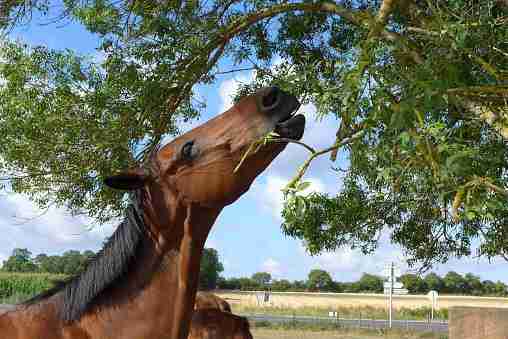Horses are magical creatures, and their presence light up the air when they enter an arena or run free in a field. Although there are breeds with long hair, what if there were horses with horns? The mystery of ancient history – are they true or false? Which horse species have horns?
There are horse breeds with horns, the Carthusian or Andalusian horse breed, the Datong breed, and the Moyle breed. Although these horns are not significant and external like goats or cows, they protrude from the brow of these breeds. Research shows that unicorns could exist with modification.
You might have only wondered about these horses with horns, but here you will find out more about them. These three horse breeds with horse horns have unique traits, sizes, and abilities, like any other horses, but they have little secrets bulging from their brows.
Horses With Horns: The Carthusian Breed
The Carthusian, also known as Cartojano, is an old offspring of the original Spanish horse. They have a rich history and date back to the 1700s and 1800s, but they are endangered today, with only 500 left in the total of Spain.
It seems that these horses have an “ancestor” called Esclavo. The first horse of this Cartojano breed was a dark gray shire, and people stood in awe of its perfection. But unfortunately, no one can pinpoint exactly where these horses came from or how their existence began.
History shows that the Carthusian breed originated in Spain and that two brothers owning a farm there couldn’t pay their dues to the monks but instead paid them with these horses.
Monks tried to keep Esclavo’s bloodline pure for as long as possible, but in 1736 some mares were given to be mated with these beautiful Carthusian horses – and the Andalusian branch of the breed was born.
Although the horses the monks owned were kept pure, they are among the lesser few, which is why they are dying out today. The one thing Esclavo had that showed as a downfall at first was warts under its tail, but these ended up being a key trait to the Carthusian breed. Another trait was the calcium deposits that looked like small horns above their brows.
The Carthusian breed’s physical traits include a height of 15 to 16 hands (60 to 64 inches), and they can weigh up to 2000 pounds. The most prominent colors you can see them in are gray, black, or chestnut, with gray being the most dominant color you will find.
They are flawless, graceful, and noble. The Carthusian slim medium-length face plays a part in its elegant look and is used as show horses and for riding. The Andalusians are more common, not as pure as the Carthusian horses, but are further down in the same bloodline.
Breeders are trying their best to preserve this ancient bloodline, but it is challenging when only 3% of the Andalusian breed comprises this rare Carthusian composition. Nobody knows if they will be able to conserve it, but it is a fascinating species that make the world a better place.

Horses With Horns: The Datong Breed
Another horse breed that has horns is the Datong breed. They originated from China, and history tells that King Mu reigned when this “dragon horse” appeared over 4000 years ago. The artwork of the dragon horse shows them with two short bone-like projections near the ears, looking like horns.
Although the ancient Chinese called them horns and gave them the name of dragon horse – named after the horns of a dragon – they found that these are not horns but only bosses on their foreheads.
Ancient Chinese emperors called them the 1000 li, as they could travel around 250 miles daily. The total miles might not be accurate, but it only confirms that the ancient Chinese knew the Datong for their endurance and stamina and used them as cavalry horses. They are great horses for exploring the mountains of China, and they adapt to the high altitudes.
The Datong is a petite horse standing tall between 10 and 14 hands (40 and 56 inches). There are two different types, the heavy riding type and the light riding type. The differences are that the lighter Datong tends to be taller, have less hair, and be more athletic. Conversely, the heavy Datong is shorter, has more hair, and is more muscular.
There was a time when the horns signified status, and the protrusions showed the country’s pride through them. In the 20th century, breeders started to frown upon these horns as they did not fit into the “normal look” of a horse and started to breed them out.
The Datong breed is fast and has much endurance. They mainly come in solid colors of chestnut, black, gray, or bay. They can, however, have a leopard pattern as well. Markings are not popular with the Datong breed. They have a gentle and calm temperament; thus, people use them for riding and farm work.
Suppose breeders took note of these remarkable horses and tried to keep the purity in breeding and multiplying them; they would have made many people happy. Especially those looking for working horses, endurance racers, and good temperament horses to have around.
Horses With Horns: The Moyle Horse
The Moyle horse breed is the third and final horse breed to have horn-like protrusions on its heads. However, they have a mysterious history, and their numbers are declining, so the lineage might never be entirely determined and verified. Some call the Moyle horses Mormon horse breeds, as they believe the Mormons bred with them first in the 1800s.
History shows that Chris Hansen brought the Moyle horse from Utah to Idaho, where the mystery begins – no actual origin of the species. A father saw this special pregnant mare and convinced the owner to sell it to him. Later, his 16-year-old daughter received the pregnant mare. She married into the Moyle family and became pregnant with her son.
Her son started to breed and develop this mysterious horse with Mustangs from Utah and named the new breed after himself – Rex Moyle.
In the 1900s, the United States set up a law prohibiting any breeds that are not pure, and unfortunately, the Moyle suffered under this new law. They are a mixed breed between Mustangs, their mysterious Asian ancestors (speculated to be the Datong breed), and Cleaveland Bays.
Until today, owners may not register them, and their numbers are declining immensely. Rex Moyle got 16 foals from that first mare and would have built a strong herd.
This breed is powerful, and its endurance is one of the best. People used these Moyle horses for farm work. Where other farmers would need eight horses to get a job done, a Moyle horse could do the same thing by itself.
Other Articles You May Also Be Interested In:
Steps To Breaking A Horse To Ride
Sweet Feed For Your Horse
Black and White Horse Breeds
Horse Breeds That Have Unique Manes
Breeds of Horses with Blue Eyes
Moyle started competing with the breed, and they performed excellently. The broad shoulder and powerful, flexible forelegs help them with speed. They also have a larger rib cage than other horse breeds, leading to more enormous organs causing them to perform better in endurance activities.
Breeders sell them as racing horses, but because of their strength and stamina, they will perform well as trail horses and fence workers.
First, they are known for bone protruding on the forehead covered with skin, also called horns. Secondly, for their robust and broad build. They are tall and measure between 14 and 15 hands (56 to 60 inches). The Moyle will usually be in solid colors of bay or brown.
If it weren’t for the law regarding pure horse breeds in America, this horse would have been one of the top breeds in showing because of their confirmation and robust beauty, great in racing events, impeccable endurance, and fantastic ranch work because of their incredible strength.

Characteristics Of The Three Horned Horse Breeds
Although these three breeds have horns, this doesn’t mean they have the same traits and personalities. Instead, their build differs, the uses people have for them, and their temperaments.
| Carthusian Breed | Datong Breed | Moyle Breed |
| Noble | Calm and gentle breed | Loyal, rugged, and well mannered |
| Primarily gray | Primarily chestnut colored | Primarily bay colored |
| Good confirmation in the build of this horse | Thick and long mane and tail | Large and wide feet |
| Short and broad back | Broad back | Muscular back |
| Frontal bosses also named horns | Small bony horns on the forehead | Horns look like giraffes |
| Used for shows and riding | Used for farm work and riding | Used for transportation, fence work, endurance races, riding |
| Slight convex profile with a light head | Straight silhouette and a heavy head | Beautiful head |
| Small ears and large eyes full of life | Medium length ears | Normal, average ears |
| Solid legs with clean joints | Hairy legs | Forelegs are more forward and gaskin long and flexible |
| Arched neck and in proportion with the body | Thin and short neck | Well-proportioned neck |
| Deep and broad chest | Well-rounded ribs and deep chest | Deep chest |
| Endangered, but have a less pure branch in the breed called Andalusian | Endangered | Endangered |
What About Horses With One Horn: Unicorns?
The question is bound to pop up when talking about horses with horns, but unfortunately, the magical fairytales we link to unicorns are far from the truth – or so it seems.
Most people believed unicorns were imaginary and didn’t even exist until they found unicorn remains. Archaeologists found that the remains were more rhino-like and a vicious beast of 6 feet tall, 3000 pounds in weight, and 15 feet long.
Another exciting find is that those who believed unicorns existed long ago stated that it must have been 350 000 years ago. According to the findings, they inhibited the earth 29 000 years ago. Nothing else shows that they got smaller and started to look like horses or gained any flying ability, but who knows – maybe someone could find this missing piece of the puzzle in the future.
Baron Georges, a French zoologist, stated in the 19th century that no horse could have only one horn situated in the center of its forehead. He explained that the shape of their head and a horse’s anatomy could never allow that. Some scratched the idea that unicorns could ever exist only because of his statement, but this might have been premature.
A French biologist, Dr. William Franklin, took this theory of Baron Georges and proved him wrong. He invented a unicorn bovine. The one-horned bull made quite a scene and demonstrated that the unicorn tales might be real.
He cut off the two horns of an Ayrshire bull when he was one-day old. They transplanted the horn to the center of his forehead directly next to each other. The horns grew and later intertwined with each other to form one. The bull’s attitude correlated with the ancestral stories about the unicorn beast that will fight and protect with its dangerous weapon.
Maybe the ancestors already had this idea and developed unicorn animals to protect them and their livestock. On the other hand, it might be difficult to imagine a one-horned horse as the horned horse species we know have small, inferior horns. Some speculate that the horns shrunk over time as the earth revolutionized and breeders tried to get rid of the horns.
There are many tales and twisted truths about unicorns. Unfortunately, we might never know which are true stories and which myths people are confused about because of language changes. Research and historians speculate that the horn of the magical unicorn was taken from the narwhales – arctic whales with 6-inch long teeth, precisely describing the horns of a unicorn.
Some seals that people posted in letters 33000 B.C had a unicorn on them, which should be a clue that they existed, but research led all to believe it was a one-horned ox that went extinct.

Conclusion
Although we all hoped that there was a horse somewhere roaming around that might resemble a unicorn, they would stay in dreams. The three horse breeds with horns are all robust, beautiful animals that still live but are in danger of dying out, and the chance of seeing one is very slim.
Resources
https://horseisle1.fandom.com/wiki/Datong
https://www.goodhousekeeping.com/life/entertainment/news/a37608/unicorns-are-real-fossils/









